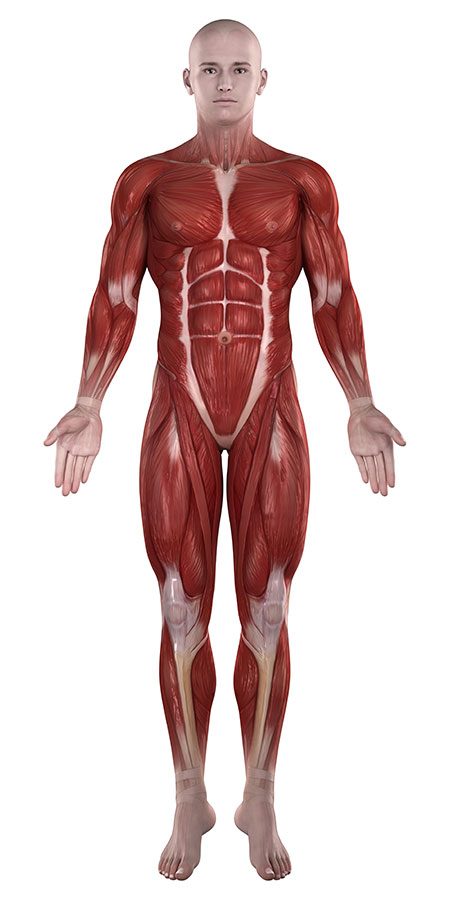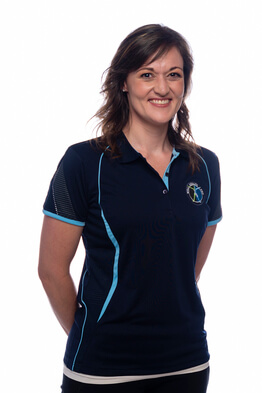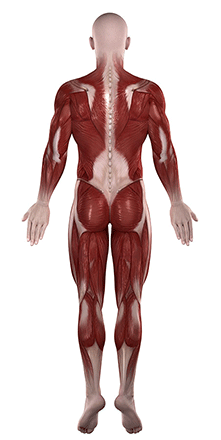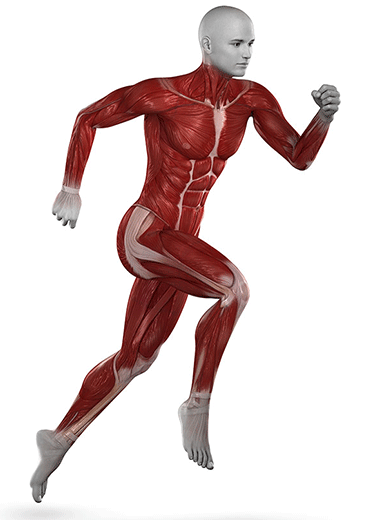A biomechanical assessment sounds like something you’d find at an engineering firm, but it’s actually a crucial part of effective physiotherapy treatment. Starting treatment without a proper assessment is a bit like walking around blindfolded – you’ll reach your destination if you’re lucky, but probably with a couple of wrong turns and wasted time…
What exactly is a Biomechanics?
In a nutshell, biomechanics is the study of how mechanical forces affect living organisms. Because living organisms are so varied and complex, you will find different areas of biomechanics. These include cardiovascular biomechanics, cell biomechanics, human movement or orthopedic biomechanics, occupational biomechanics and sport biomechanics. In the field of physiotherapy our special skill lies in human biomechanics, which includes orthopedic and sport biomechanics.
The basis of a biomechanical assessment will always be around multiple principles and factors. Most importantly, we need to determine the type, location, direction, magnitude or range of movement. The most common method of documenting the type, location and direction of movement during a biomechanical assessment is according to the plane and axes of movement.
- Sagittal plane movements include flexion and extension. Simply put, these will be forwards and backwards movements. An example of flexion will be when you bend your elbow. Extension is moving your elbow joint back to the straight position. These movements occur around the transverse axis.
- Movement in the transverse plane will include most forms of rotation. Rotation is a turning motion, for instance if you stand with your arms next to your sides with the palm of your hand against your thigh. Turning the palm of your hand away from your thigh will be rotation of your arm. This movement will be around the longitudinal axis.
- Frontal plane movements are described with relation to the midline. Examples will be abduction, moving away from the midline, or adduction, moving back towards the midline. In this case the axis will be anteroposterior, or front to back.
Don’t worry if all these terms sound like Greek to you – your physiotherapist is an expert at using them during an assessment and can explain the findings to you using everyday, practical examples.
Why is a biomechanical assessment so important?
Something like a neck muscle spasm may seem like an isolated problem, but did you ever stop to think how much it actually affects your day? Every time you grab your phone off the table or look in your blindspot while driving can cause a sudden burst of pain. As soon as it passes your busy day moves it to the back of your mind. Until it starts to happen more often and stays there for longer and you can’t remember the last time you went through a day without the pain or discomfort.
Human movement or mechanics is amazing and complex. Just think of all the movements involved in scrolling on your phone. Try holding your whole body completely still like a statue for a moment, only moving your eyes. You can’t scroll without using your fingers and you can’t see the screen without moving your neck and head. Your arm also needs to move your phone to find a comfortable distance between your eyes and your hand. All this seems well and good, but what if you have a sore shoulder? Or if you woke up with a wry neck? Something simple like reading an article or sending a message can become a massive effort if even a small part of the system breaks down.
We use biomechanical assessments to find out exactly which part of the system is causing your problem. Every time you move, it has an effect on the nerves, muscles and joints in your body. Pain, muscle spasm and injuries will have an even bigger impact, causing a ripple effect that leads to more pain and bigger problems down the line. A biomechanical assessment looks at the big picture to see how your problem affects the whole system. This way, we don’t just treat the current symptoms, we determine if there are other contributing factors that keep you from getting the long-term relief you are looking for.
What we look at during a biomechanical assessment
- Quality of movement
- Range of movement
- Compensations
- Abnormal movement patterns
- Asymettry
- Posture
- Pain during certain movements
- Movement restrictions
- Muscle control or activation
- Balance
- Avoidance or fear with certain movements
“Take care of your body – it’s the only place you have to live.”
What you can expect during a Biomechanical Assessment
A biomechanical assessment can be general or localized to a certain area. What both types have in common, though, is that our assessments will always focus on getting information about your specific problem.
During the assessment your physiotherapist will ask you to do certain movements or activities. As you perform these movements we will ask about any pain, discomfort or if one side feels different from the other side. Many of the tests will also be performed on the uninjured side for comparison. This can be used as a baseline or “normal” value, because what we find during a biomechanical assessment isn’t always relevant to your current injury. For example doing a squat movement while standing on one leg. If your uninjured side can do it perfectly, but you are unable to bend your knee on the injured side it gives us an indication of what you could do before your injury. The opposite is also true, so if the non-painful side can’t perform the movement we won’t necessarily need to use that specific test on the painful side.
Remember that a biomechanical assessment can be adapted to your current level of pain or symptoms. If you have a lot of pain, for example pain from an acute hamstring muscle tear, pinched nerve or herniated disc, we might only do the necessary tests to confirm a diagnosis and rule out any serious pathology. In other cases, urgent imaging or referral may be necessary, for instance fractures or severe neurological fallout.
Biomechanical screening
If you have an annoying “twinge” or “niggle” that comes and goes, a biomechanical assessment can also help you. In your case, we will use a biomechanical screening to find out what is causing your problem. During a screening, we will use a series of tests to find muscle weakness, asymmetry, muscle tightness or joint stiffness. An annoyance that comes and goes has a way of becoming a painful problem later on, so using these tests we can find the underlying problem to prevent further injury, be proactive with early treatment or improve performance by helping your body perform at its peak.
Preventative Pro-active Performance
What a biomechanical assessment feels like:
Many of the techniques and movements used during a biomechanical assessment are also treatment techniques, so your treatment starts as soon as you walk into the consultation room. While you perform certain movements or tests, we are assessing muscles, nerves and joints by putting specific structures under stress. This is how we determine if these structures are functioning as they should.
Under normal circumstances, your body can cope and adapt to extra load. With any injury, this capacity to cope and adapt will be affected. As a result, you might experience pain or discomfort during tests, but pain is not the enemy, it’s only the messenger. How your muscles, nerves and joints respond to stress testing will help us to diagnose your specific problem. With an accurate diagnosis we can treat your condition more effectively. Your physiotherapist will point out certain habits, postures and compensations as the tests are performed.
How long does a biomechanical assessment take?
A full biomechanical assessment takes anywhere between 15 minutes to half an hour or more, depending on your specific condition. This complex assessment ensures that we can diagnose your condition(s) and implement an effective treatment plan. As part of the assessment you will receive counseling and education about the findings and what you can expect from treatment.
There will also be a short biomechanical assessment at the start of each follow-up session to determine how your problem responded to the previous treatment. This allows us to adapt your treatment plan accordingly to get long-term results.
How many times should I go for a biomechanical assessment?
We will spend a large part of your first appointment on a full biomechanical assessment to give you a diagnosis and find the cause of your problem. The assessment will give us a baseline of your problem. Think of your treatment as a journey or marathon – it’s much easier to stay on the path if you know where the starting point is. Each follow-up session will include a brief biomechanical assessment, according to what we determined in the initial assessment. That way we can determine your progress and make sure that your treatment plan is on track. Everyone responds differently to physiotherapy treatment and we want to make sure that we treat your specific problem as effectively as possible.
Your physiotherapist will discuss a treatment plan with you, giving you an idea of how long it will take for your condition to improve and how often treatment is needed. For some conditions you will need 3-4 session and in other cases you will might have to come in for 6-8 sessions. Mostly we need to see you twice during your first week of treatment, then once a week for the next two weeks. Thereafter you appointments will be once every second week in the next month, depending on your progress.
Cost of biomechanical assessment
A biomechanical assessment is a crucial part of your treatment protocol, but you will never be paying only for the assessment. During the assessment we use treatment techniques, exercises and movements as tests, so the biomechanical assessment is also part of your treatment.
Assessment and reassessment is a constant part of treatment to check on your progress and manage flare-ups. Guessing won’t get you the results you want, so biomechanical assessments are how we stay zoomed in on your problem without losing sight of the full picture.
Medical Aid Code – 702
The medical aid code used is 702 for the complex evaluation and counseling. There will always be a subjective assessment before the physical (biomechanical) evaluation or assessment. This involves taking a complete history of your current problem, relevant biopsychosocial information and medical history. The history gives us a differential diagnosis and important conditions we may need to exclude before starting treatment.
The biomechanical assessment will form the main part of the physical evaluation when we use tests to confirm or refute the differential diagnosis. Physical evaluation involves the testing of multiple systems and structures, with the main focus on the neuromusculoskeletal system. Throughout the assessment you will be counseled regarding our findings and the implications for your treatment. Counseling can also include advice on protecting your injury, activity modification, ergonomics, pain management strategies and pain neuroscience education.
Does it make a difference to have a biomechanical assessment done by an experienced physiotherapist?
Human biomechanics is a skill, but also a bit of an art. Knowing the principles is only the first, tiny step of a biomechanical assessment. Skill and experience allows a physiotherapist to see minute changes in the quality of your movement and posture. We know how to interpret what we see, or more importantly, what we don’t see. Skill helps us to see which structures might be causing your problem from a trick movement or hesitation during movement testing. From there, experience tells us which tests to use to confirm or rule out those specific structures.
Our physiotherapists have years of clinical experience and in depth biomechanical knowledge. We understand the value of an expert biomechanical assessment to diagnose and treat different painful conditions and injuries.





